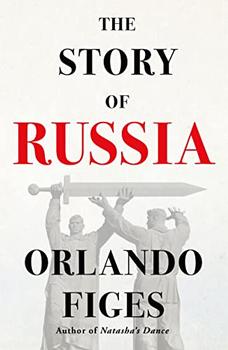Summary | Excerpt | Reviews | Beyond the book | Read-Alikes | Genres & Themes | Author Bio

Between Russia and China
by Colin Thubron The little-known Amur River, the 10th longest in the world, acts as the natural border of Russia and China for more than a thousand miles. It is, according to celebrated travel writer and novelist Colin Thubron, "a fault-line shrouded in old mistrust." In The Amur River: Between Russia and China, Thubron delicately excavates the river's natural and manmade divisions.
The little-known Amur River, the 10th longest in the world, acts as the natural border of Russia and China for more than a thousand miles. It is, according to celebrated travel writer and novelist Colin Thubron, "a fault-line shrouded in old mistrust." In The Amur River: Between Russia and China, Thubron delicately excavates the river's natural and manmade divisions.
In his 80th year, Thubron and his guides set out on horseback in the "near-sacred wilderness" of Mongolia, once the homeland of Genghis Khan, where the Amur River gestates in the Onon, its most distant tributary. Along the banks of the Onon, or "Holy Mother" to many Mongolians, things immediately get off to a rough start; Thubron savagely twists his ankle, and his horse later rolls on top of him, fracturing several ribs. Pushing deeper into Mongolia and east toward its border with Russia, where the steppe lands roll forward in unbroken waves, Thubron blends in the histories of the Mongols, their veneration of Genghis Khan, and the shifting triangulation of Mongol-Russian-Chinese grievances. He speaks with a member of a small tribe, the Buryat, who despite Russian oppression hate the Chinese far more:
"This still astonishes me. The Russians crushed the Mongolians' native culture, devastated their monasteries and almost liquidated their elite. Yet it is the Chinese, dominant in the country for three centuries until 1921, who are regarded with visceral loathing and disgust."
Leaving behind the Onon, the Amur tributary changes genders to become the Shilka, or as Russians call it, the "Little Father." Moving eastward into Russia, Thubron experiences one of the many pitfalls of being a foreigner abroad. Waiting for a boat in the nondescript town of Sretensk, he's brought in for questioning by the local police. A stone-faced policewoman with curls dripping down the sides of her face reminds him of Medusa. After further investigation, his claims about writing a book are believed and he is let on his way, but the "feeling dissipates only after time, that you are now the enemy."
It is where the river flows as the 1,100-mile border between Russia and China that Thubron hits a steady stride of social and historical reporting, interviewing his various hosts in halting Mandarin and unsteady Russian about life along the Amur, or the Heilongjiang ("Black Dragon River") to the Chinese. A troubled and dark history between the Russians and Chinese in the region still stirs in the memories of both peoples who, Thubron repeats more than once, find each other "so alien." To some of the contemptuous Chinese he meets, the Russians are the "Hairy Ones," who drink too much. Meanwhile, many Russians curse the influx of Chinese development that has pumped cheap goods from the Chinese city of Heihe into its mirror city Blagoveshchensk across the river and dumped so much industrial pollution into other rivers feeding the Amur that "on the Russian shore downriver they say the fish taste of chemicals." A long history of conquest and broken treaties results in two very different stories, but whose story is true, or even just truer? It is this troubling tension between Russia and China that lies at the heart of Thubron's book (and gives a double meaning to its subtitle).
"I stare out on a leaden sea, remembering others of the earth's great rivers that carry no such tension: the Nile, the Yangtse, the Ganges, the Amazon, the Indus. However threatened, they flow like lifeblood through their nation's heart. Only the Amur divides."
His long adventure via horse, train, boat, taxi and foot carries Thubron finally to the end waters of the Amur in the city of Nikolaevsk along the far eastern coast of Russia, where "in sunlight still, the Amur mouth yawns three miles wide, running at five knots in waves of silvered mud. The solitude of its end reminds me of no river I have seen." The Amur River is a poignant contribution to Thubron's acclaimed career, with his trademark lyricism elevating nature to a central, breathing character that often reflects the ambivalence of its human counterparts. Two minor quibbles are the lack of historical citations and photographs; with as much history as Thubron packs in, a bibliography is essential, as are visual aids for a travel book. Despite this curious oversight, the book will please armchair travelers and longtime fans of Thubron's work alike.
Map of the Amur River, courtesy of International Rivers
![]() This review was originally published in The BookBrowse Review in November 2021, and has been updated for the
October 2022 edition.
Click here to go to this issue.
This review was originally published in The BookBrowse Review in November 2021, and has been updated for the
October 2022 edition.
Click here to go to this issue.

If you liked The Amur River, try these:

by Orlando Figes
Published 2023
From "the great storyteller of Russian history" (Financial Times), a brilliant account of the national mythologies and imperial ideologies that have shaped Russia's past and politics - essential reading for understanding the country today.

by Candice Millard
Published 2023
The harrowing story of one of the great feats of exploration of all time and its complicated legacy - from the New York Times bestselling author of River of Doubt and Destiny of the Republic.
Your guide toexceptional books
BookBrowse seeks out and recommends the best in contemporary fiction and nonfiction—books that not only engage and entertain but also deepen our understanding of ourselves and the world around us.